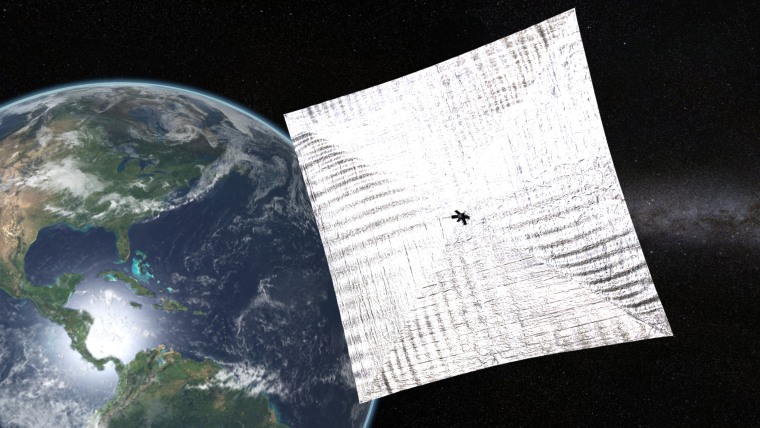After eight days of uneasy silence, the LightSail solar sail experiment rebooted itself to recover from a software glitch in orbit, the Planetary Society said Saturday.
"Our LightSail called home!" Bill Nye the Science Guy, who's the nonprofit society's CEO, reported in a news release emailed to reporters. "It’s alive!"
The LightSail nanosatellite is about the size of a loaf of bread, but there's a 344-square-foot sail of ultra-thin reflective plastic folded inside. It was launched on May 20 as one of the secondary payloads accompanying the U.S. Air Force's X-37B space plane into orbit. Just a couple of days after launch, the spacecraft stopped transmitting data. Mission managers figured out that a software glitch had filled its onboard memory with needless information, causing a computer crash.
Engineers had to wait for the automatic reboot, which may have been triggered by a stray cosmic ray.
"We were ready for three more weeks of anxiety," Nye said. "In this meantime, the team has coded a software patch ready to upload. After we are confident in the data packets regarding our orbit, we will make decisions about uploading the patch and deploying our sails — and we'll make that decision very soon."
Nye said the mission "has been a roller coaster for us down here on Earth, all the while our capable little spacecraft has been on orbit going about its business."

Related: LightSail Shines Spotlight on Solar Sails
The primary goal of this test flight is to practice the sail deployment procedure. A higher-altitude LightSail test, scheduled for next year, will provide an opportunity to steer a spacecraft by reflecting photons of light from the sun at various angles.
The technology was tested previously by Japan's Ikaros solar sail in 2010 and NASA's Nanosail-D spacecraft in 2011. The Planetary Society hopes that its LightSail project will lead to even more ambitious sun-powered space voyages. Eventually, solar sails could conceivably be used to propel spacecraft to the outer reaches of the solar system and beyond.
For updates on LightSail's status, check in with Jason Davis' blog on the Planetary Society website.
